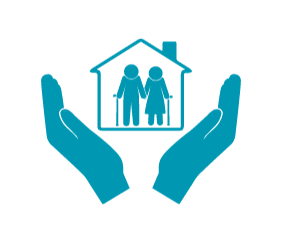I’m sure you’ve thought about the safety of your home before, but have you ever wondered if Medicare can help cover the cost of a home safety evaluation? In this article, we will explore whether Medicare includes coverage for these evaluations, which can provide valuable insights and recommendations to ensure the safety and well-being of you and your loved ones within your home environment. Keep reading to find out more about the potential benefits of a home safety evaluation and whether Medicare can offer any assistance in this regard.
What is a home safety evaluation?
Overview
A home safety evaluation is a comprehensive assessment of the living environment to ensure that it is safe and free from potential hazards. This evaluation is typically done by healthcare professionals who specialize in home safety assessments. They will assess factors such as accessibility, fall risks, and the overall safety of the home.
Purpose
The purpose of a home safety evaluation is to identify potential hazards and risks within the home and recommend modifications or assistive devices that can improve safety and reduce the likelihood of accidents. The evaluation aims to create a safe living environment that promotes independence and wellbeing.
Importance of Home Safety Evaluations
Reducing risks of accidents
Accidents in the home can have serious consequences, especially for vulnerable individuals such as the elderly or those with disabilities. A home safety evaluation can help identify and address factors that may increase the risk of accidents, such as loose rugs, poor lighting, or inadequate handrails. By addressing these risks, the evaluation can significantly reduce the likelihood of falls, burns, or other accidents.
Identifying potential hazards
Sometimes, potential hazards in the home can go unnoticed. A home safety evaluation can help identify these hazards, such as slippery surfaces, electrical hazards, or tripping hazards. By proactively addressing these hazards, individuals can prevent accidents from occurring and create a safer living environment for themselves or their loved ones.
Creating a safe living environment
A safe living environment is essential for overall wellbeing and quality of life. A home safety evaluation can help individuals feel more secure in their homes by addressing safety concerns and providing recommendations for modifications or assistive devices that can enhance safety. By creating a safe living environment, individuals can maintain their independence and enjoy peace of mind.
Who benefits from a home safety evaluation?
Elderly individuals
Older adults often face unique challenges that can increase the risk of accidents in the home. Declining physical abilities, vision impairments, and balance problems can make it more difficult to navigate the home safely. A home safety evaluation can help identify and address these challenges, reducing the risk of falls and other accidents.
Individuals with disabilities
Individuals with disabilities may encounter barriers within their homes that can limit their mobility and independence. A home safety evaluation can assess accessibility and recommend modifications, such as wheelchair ramps or grab bars, that can enhance safety and accessibility.
Individuals recovering from surgery or illness
After surgery or illness, individuals may have temporary limitations that make it difficult to navigate their homes safely. A home safety evaluation can identify potential hazards and recommend temporary modifications or assistive devices that can facilitate a smoother recovery and reduce the risk of accidents.
Medicare Coverage for Home Safety Evaluations
Medicare Part A
Medicare Part A, also known as hospital insurance, generally does not cover home safety evaluations. However, it may cover certain inpatient rehabilitation services that incorporate a safety evaluation as part of the overall treatment plan.
Medicare Part B
Medicare Part B, also known as medical insurance, may cover a portion of the cost of a home safety evaluation. This coverage falls under the umbrella of preventative services, which aim to identify and address potential health risks before they become more serious.
Medicare Advantage Plans (Part C)
Medicare Advantage Plans, also known as Medicare Part C, are offered by private insurance companies approved by Medicare. These plans are an alternative to Original Medicare and often include coverage for home safety evaluations as an added benefit. It is important to review the specific details of your Medicare Advantage Plan to determine the level of coverage.
Home Safety Evaluation Services Covered by Medicare
Home visits by healthcare professionals
Medicare may cover home visits by healthcare professionals who specialize in home safety evaluations. These professionals will assess the living environment, identify potential hazards, and make recommendations for modifications or assistive devices.
Assessment of fall risks
Falls are a common cause of injuries, especially among the elderly. Medicare may cover the assessment of fall risks during a home safety evaluation to identify factors that may increase the risk of falls, such as loose carpets, uneven flooring, or inadequate lighting.
Identification of home modifications and assistive devices
Medicare may cover the identification and recommendation of home modifications and assistive devices that can improve safety and accessibility within the home. This may include modifications such as bathroom grab bars, wheelchair ramps, or specialized equipment for individuals with disabilities.
Eligibility Requirements for Medicare Coverage
Medical necessity
To qualify for Medicare coverage for a home safety evaluation, it is generally required that the evaluation is deemed medically necessary. This means that the evaluation must be recommended by a healthcare professional in order for Medicare to cover the cost.
Prescription or referral
Typically, a prescription or referral from a healthcare professional is required for Medicare coverage of a home safety evaluation. This ensures that the evaluation is recommended by a qualified professional who can determine the medical necessity.
Approved healthcare professionals
Medicare coverage for home safety evaluations is generally limited to evaluations conducted by approved healthcare professionals. These professionals may include occupational therapists, physical therapists, or registered nurses with expertise in home safety assessments.
Costs and Limitations of Medicare Coverage
Deductibles and coinsurance
Medicare coverage for home safety evaluations may be subject to deductibles and coinsurance. This means that individuals may be responsible for paying a portion of the cost out-of-pocket. It is important to review your specific Medicare plan to understand the applicable deductibles and coinsurance.
Coverage limitations
Medicare coverage for home safety evaluations may have limitations on the frequency of coverage. For example, Medicare may only cover a home safety evaluation once every few years. It is important to review the details of your Medicare plan to determine the specific limitations on coverage.
Out-of-pocket expenses
Even with Medicare coverage, individuals may still have out-of-pocket expenses associated with a home safety evaluation. This can include deductibles, coinsurance, or any costs that exceed the coverage limits. It is important to review your specific Medicare plan to understand your potential out-of-pocket expenses.
Alternatives for Coverage of Home Safety Evaluations
Medicaid
Medicaid is a joint federal and state program that provides health coverage to individuals with low income. While Medicaid coverage varies by state, it may cover home safety evaluations for eligible individuals. It is important to check with your state’s Medicaid program to determine the specific coverage criteria.
Long-term care insurance
Some long-term care insurance policies may include coverage for home safety evaluations as a preventative measure. These policies are designed to cover the costs of long-term care services and may include coverage for certain home safety assessments. Review your insurance policy or consult with your insurance provider to determine if this coverage is available.
State and local programs
In certain cases, state or local programs may provide coverage or financial assistance for home safety evaluations. These programs are often specific to a particular region and may have eligibility requirements. Contact your local Department of Health or Aging to inquire about potential programs available in your area.
How to Obtain a Home Safety Evaluation
Contacting Medicare
To obtain a home safety evaluation, start by contacting Medicare to inquire about coverage and eligibility requirements. Medicare representatives can provide information specific to your Medicare plan and guide you through the process of obtaining a referral or prescription for a home safety evaluation.
Finding Medicare-approved providers
In order to use Medicare coverage for a home safety evaluation, it is important to find healthcare professionals who are approved by Medicare. Medicare’s official website provides a search tool that allows you to find Medicare-approved providers in your area. This tool can help ensure that you are working with professionals who meet Medicare’s criteria for coverage.
Scheduling the evaluation
Once you have obtained a referral or prescription for a home safety evaluation and found a Medicare-approved provider, you can schedule the evaluation. The provider will work with you to determine a convenient date and time for the evaluation. It is important to follow any instructions provided by the provider to ensure a successful evaluation.
Conclusion
Medicare coverage for home safety evaluations can provide crucial support in creating a safe living environment. By reducing risks of accidents, identifying potential hazards, and promoting a safe living environment, home safety evaluations can significantly improve overall wellbeing. While Medicare coverage may have limitations and out-of-pocket expenses, alternatives such as Medicaid, long-term care insurance, and state or local programs may also provide coverage options. Whether you are an elderly individual, someone with disabilities, or recovering from surgery or illness, a home safety evaluation can play a vital role in maintaining independence and ensuring a safe and secure home.


